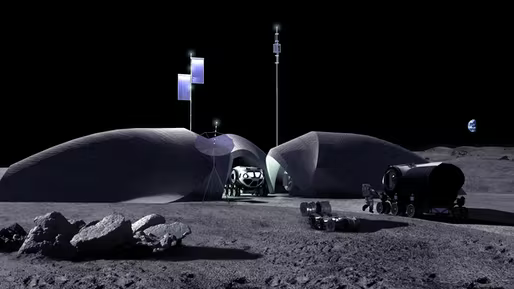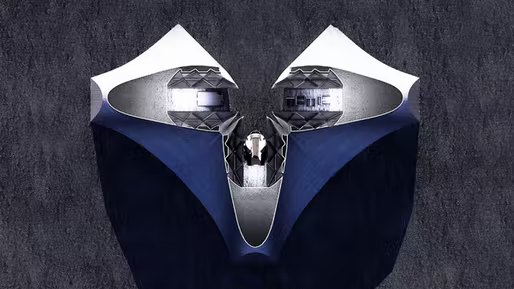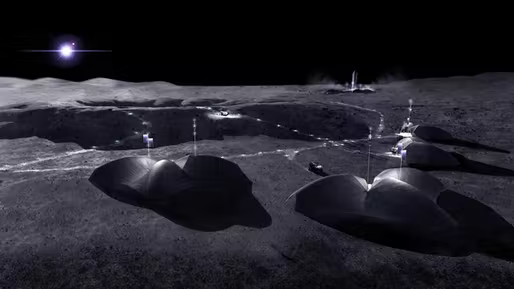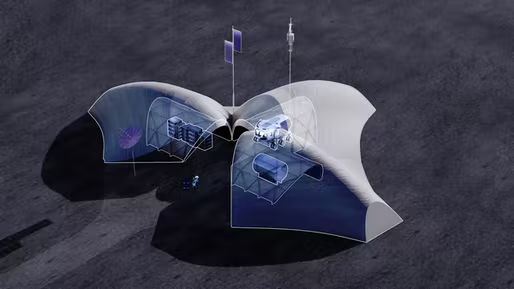AI SpaceFactory and the NASA Kennedy Space Center recently revealed LINA, a 3D-printed building envisioned as a lunar outpost for future moon explorers.

The structure, which is planned to be built on the south pole of the moon, is characterized by Romanesque arcs that require less material to endure enormous compressive loads.
"The Peak of Eternal Light"
The Artemis Mission will transport astronauts to the Lunar South Pole within the next ten years. This location is known as "The Peak of Eternal Light," where the sun is always present and rises at a low angle of incidence, according to designboom.

This location is believed to be close to a crater rim that provides long-lasting illumination for solar energy resources, as well as being close to permanently darkened crater sections that could be useful for water gathering procedures.
It is worth noting that the design was made possible through AI SpaceFactory's continued partnership with NASA, which dates back to its victory in the NASA 3D Printed Habitat Challenge.
Read also : NASA's DART Mission May Deform a Mini Moon
Fun Facts About LINA
1. LINA Will Have a Life Expectancy of 50 Years
LINA's main purpose is to safeguard astronauts and essential mission components from risks like solar particle events, moonquakes, galactic cosmic radiation, and many more.

According to AI SpaceFactory, LINA was built with a life expectancy of at least 50 years. An overburden of protective regolith measuring 2.7 meters thick is intended to be supported by LINA's ultra-thin shell.
As a result, the structure is lightweight and mass-optimized to serve as protection from radiation and harsh lunar conditions.
2. LINA Will Bank on Solar Energy
A pressurized, manned spacecraft like the Space Exploration Vehicle, as well as communication equipment and habitation modules, may all fit inside LINA.
The building's design contains a photovoltaic tree to directly harvest solar energy as well as three distinct flats that share a common patio.

The team will use the nearly constant sunshine on the crater's peaks provided by the outpost's proximity to the Shackleton crater's rim at the lunar south pole to produce energy. Meanwhile, the inside of the crater's shadows will enable the collection of water ice.
Further, each unit of the structure has a floor space that may be used for living purposes of 75 square meters, and the center staging area has a space of 90 square meters. The 3D-printed shell is 8 meters by 9.4 meters in size, with a height clearance of 5 meters.
3. LINA Will Be Made of Earth and Lunar Material
LINA's structural design will be 3D printed utilizing lunar regolith and a polymer derived from Earth. LINA will be 3D printed at a 60-degree angle to enable the construction of the vaulted roof, as opposed to traditional 3D printing, which adds layers parallel to the ground.
4. LINA Will Be Designed By Autonomous Robots
The future human foothold on the moon will go all-in as it will be built by autonomous robots, according to AI SpaceFactory.
Related Article : NASA Artemis Astronaut Captures Stunning Image of the Moon from ISS
This article is owned by Tech Times
Written by Joaquin Victor Tacla
ⓒ 2025 TECHTIMES.com All rights reserved. Do not reproduce without permission.




